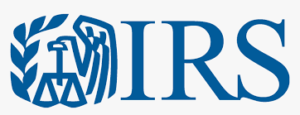IR-2022-157, September 6, 2022

WASHINGTON — The Internal Revenue Service reminds taxpayers who pay estimated taxes that the deadline to submit Estimated Tax Payments for 3rd Quarter is September 15, 2022.
Taxpayers not subject to withholding, such as those who are self-employed, investors or retirees, may need to make quarterly estimated tax payments. Taxpayers with other income not subject to withholding, including interest, dividends, capital gains, alimony, cryptocurrency and rental income, also normally make estimated tax payments.
In most cases, taxpayers should make estimated tax payments if they expect:
- To owe at least $1,000 in taxes for 2022 after subtracting their withholding and tax credits.
- Their withholding and tax credits to be less than the smaller of:
- 90% of the tax to be shown on their 2022 tax return or
- 100% of the tax shown on their 2021 tax return. Their 2021 tax return must cover all 12 months.
Special rules apply to some groups of taxpayers, such as farmers, fishermen, casualty and disaster victims, those who recently became disabled, recent retirees and those who receive income unevenly during the year. Publication 505, Tax Withholding and Estimated Tax, provides more information on estimated tax rules. The worksheet in Form 1040-ES, Estimated Tax for Individuals, or Form 1120-W, Estimated Tax for Corporations, has details on who must pay estimated tax.
How to figure estimated tax
To figure estimated tax, individuals must figure their expected Adjusted Gross Income (AGI), taxable income, taxes, deductions and credits for the year.
When figuring 2022 estimated tax, it may be helpful to use income, deductions and credits for 2021 as a starting point. Use the 2021 federal tax return as a guide. Taxpayers can use Form 1040-ES to figure their estimated tax.
The Tax Withholding Estimator on IRS.gov offers taxpayers a clear, step-by-step method to have their employers withhold the right amount of tax from their paycheck. It also has instructions to file a new Form W-4 to give to their employer to adjust the amount withheld each payday.
How to avoid an underpayment penalty
Taxpayers who underpaid their taxes may have to pay a penalty. This applies whether they paid through withholding or through estimated tax payments. A penalty may also apply for late estimated tax payments even if someone is due a refund when they file their tax return.
To see if they owe a penalty, taxpayers should use Form 2210, Underpayment of Estimated Tax by Individuals, Estates, and Trusts. Taxpayers can also see the Form 2210 instructions under the “Waiver of Penalty” section. The IRS may waive the penalty if someone underpaid because of unusual circumstances and not willful neglect. Examples include:
- Casualty, disaster or another unusual situation.
- An individual retired after reaching age 62 during a tax year when estimated tax payments applied.
- An individual became disabled during a tax year when estimated tax payments applied.
- Specific written advice from an IRS agent given in response to a specific written request. The taxpayer must provide copies of both.
The fourth and final 2022 estimated tax payment is due January 17, 2023.
Other IRS.gov resources
- Pay Online provides complete tax payment information, how and when to pay, payment options and more.
- Form 2210, Underpayment of Estimated Tax by Individuals, Estates, and Trusts
- Form 2220, Underpayment of Estimated Tax by Corporations
Contact ATS today with any questions about Estimated Tax Payments for 3rd Quarter !